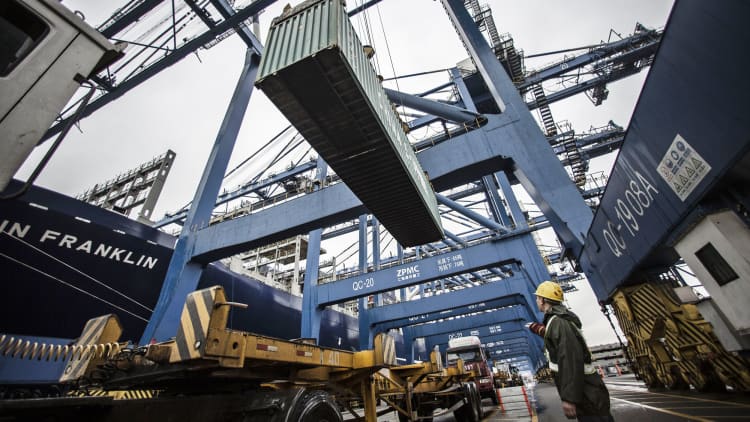A relief rally in stocks will arrive in October but President Donald Trump isn’t finished with his trade demands, according to an investment bank specializing in emerging market assets.
The threat of U.S.-led protectionism has sent capital flowing out of riskier emerging market (EM) assets. The MSCI index of developing-nation stocks on the cusp of turning into a bear market and China, normally considered something of a safe haven within the emerging market space, has seen its Shanghai composite index slip to its lowest level in more than two years.
Currencies have also been hit with the Indian rupee, South African rand and Indonesian rupiah all crumbling against the U.S. dollar.
Washington has so far slapped a 25 percent tariff on around $34 billion dollars of Chinese exports, with an explicit threat that they could raise that figure soon.

Charles Robertson, global chief economist at Renaissance Capital told CNBC at a presentation Thursday that Trump’s bluster is a typical opening stance but he will ease back when the U.S. midterm elections come along.
“I think there is a relief rally in October when he announces some triumph with China where they agree to buy $100 billion extra of U.S. exports, up from the $70 billion they started offering two or three weeks ago,” Robertson said.
Analysts at Renaissance Capital have estimated that Trump’s tariffs so far affect just 0.4 percent of the $2.2 trillion worth of goods that China exports each year.
The 2018 United States elections will mostly be held on November 6 this year. Robertson said a deal with China could be held off until as late as early October so Trump can’t be embarrassed before the elections by data showing a continued rise in the U.S. trade deficit.
The economist added that while the deal will help Trump to look like a winner for elections, it won’t satisfy the U.S president’s long term instincts on trade.
“He is a man who has been protectionist to his core since at least the 1980s and I think further back than that. As long as he stays in power we will get more of these (trade threats),” he added.
Trump and Reagan
Robertson said the current situation could be related back to when former U.S. President Ronald Reagan also made aggressive advances on trade. Back then, the main target was Japan.
“You saw constant attacks on trade. Demands on car quotas, steel exports, and 100 percent tariffs on Japanese televisions, Japanese computers. It went on and on,” Robertson said.
In a speech in 1985 Reagan said that “if trade is not fair for all, then trade is free in name only” and that he would not “stand by and watch American workers lose their jobs because other nations do not play by the rules.”
Robertson said, like Trump, Reagan also had a huge fiscal deficit that he wanted to reduce but the protectionist measures he undertook only saw the trade deficit with Japan increase.
“The Japanese moved production offshore. Just as I think China will do over time as well,” said Robertson.


